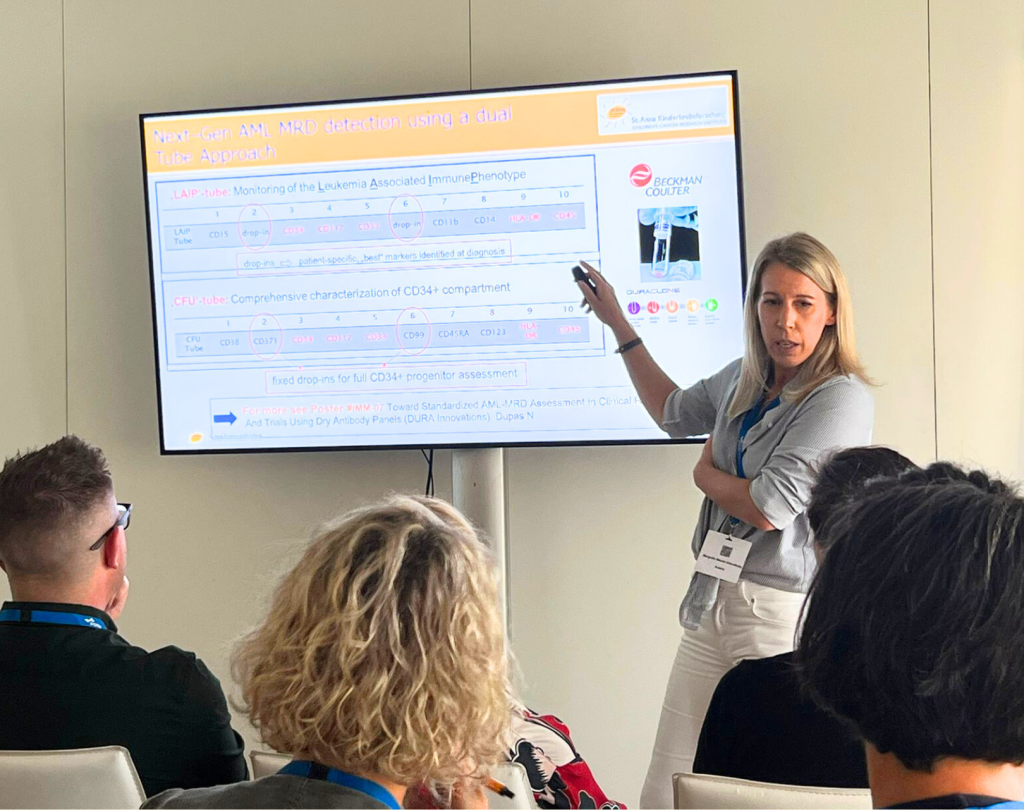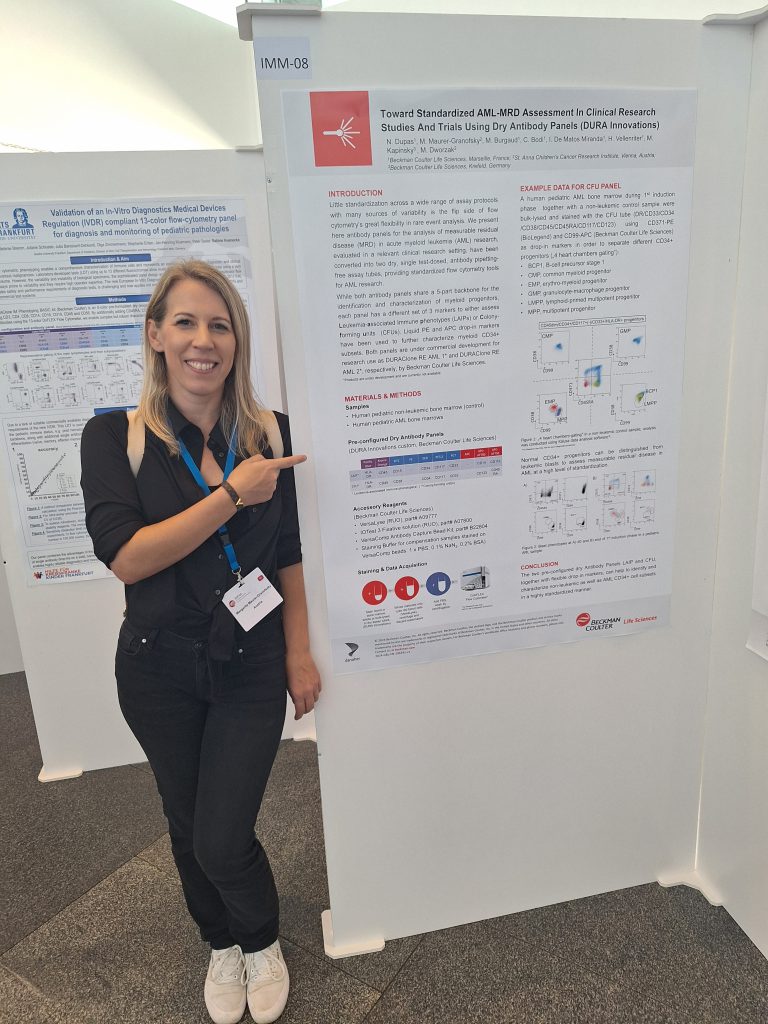ESCCA Conference 2024: Advancements in Clinical Cell Analysis
Margarita Maurer-Granofszky, researcher of the Dworzak group, was invited to present her research at the ESCCA Conference 2024. In her presentations, she highlighted the importance of detecting minimal/measurable residual disease (MRD) in children with acute myeloid leukemia (AML) and how new technologies like artificial intelligence (AI) can improve diagnostic accuracy.
The European Society for Clinical Cell Analysis (ESCCA) is one of the world’s leading organizations dedicated to the research and application of cell analysis. Every year, experts from around the globe gather at the ESCCA conference to present and discuss the latest scientific developments. The 2024 conference, held from September 25-28 in Palma de Mallorca, once again provided a platform for innovative technologies that play a critical role in diagnosing and treating serious diseases like cancer.
This year, Margarita Maurer-Granofszky, a researcher in the Dworzak Group, was invited to deliver two talks at the ESCCA conference. Her presentations focused on the detection of minimal/measurable residual disease (MRD) in children with acute myeloid leukemia (AML) and the global standardization of these crucial measurements. She specifically explored the use of flow cytometry and emerging approaches like AI to enhance the accuracy and reliability of results.

What is flow cytometry and how does it work?
Flow cytometry is an advanced technique used to analyze individual cells in liquid samples. In this process, a sample is passed through a specialized device called a flow cytometer. As the cells pass one by one through a laser beam, the device measures properties such as size, shape, structure, and surface molecules. This detailed information allows for the identification of even rare cell types, such as cancer cells, within a sample.
One key advantage of flow cytometry is its ability to examine large numbers of cells in a short time, providing precise data. In cancer research, it is often used to monitor therapies and detect whether any cancer cells remain in a patient’s body. This technique offers valuable insights into disease progression and helps doctors tailor treatments to individual patients.
Minimal Residual Disease (MRD) and Its Prognostic Importance
A central focus of Margarita’s research is the detection of minimal residual disease (MRD) via flow cytometry. MRD refers to the residual amounts of cancer cells that remain in the body after therapy, which are often undetectable by conventional diagnostic methods. Despite an apparently successful treatment, these remaining cancer cells can eventually lead to a relapse of the disease. Accurate MRD detection is therefore critical for improving long-term outcomes.
In pediatric AML, flow cytometry plays a key role in identifying these extremely small numbers of cancer cells. Early detection of MRD allows doctors to better predict the disease’s course and make potential adjustments to treatment, making MRD detection a vital prognostic factor that indicates how likely the leukemia is to return.
Standardization and New Technologies in MRD Research

In her talks, Margarita Maurer-Granofszky emphasized the need to standardize flow cytometric MRD measurements globally. Currently, differences exist in how these measurements are performed and interpreted across clinics and research institutions. A unified approach would ensure that results are comparable and reliable everywhere.
Another focus of Margarita’s research is the introduction of new technologies, such as the use of AI to analyze the vast amounts of data generated by flow cytometry. AI can help recognize patterns in the data and refine diagnoses. Along with stringent quality controls, this can further improve the reliability of MRD detection.
Margarita’s work at the ESCCA conference demonstrates how modern technologies and global collaboration in cell analysis are revolutionizing leukemia treatment and ultimately helping to improve the survival chances of affected children.